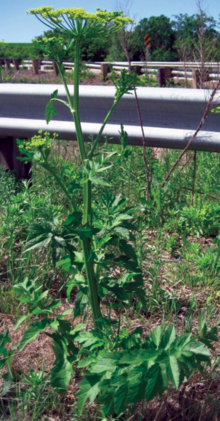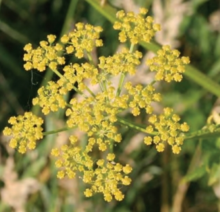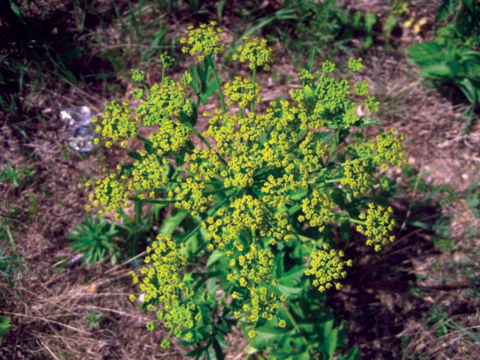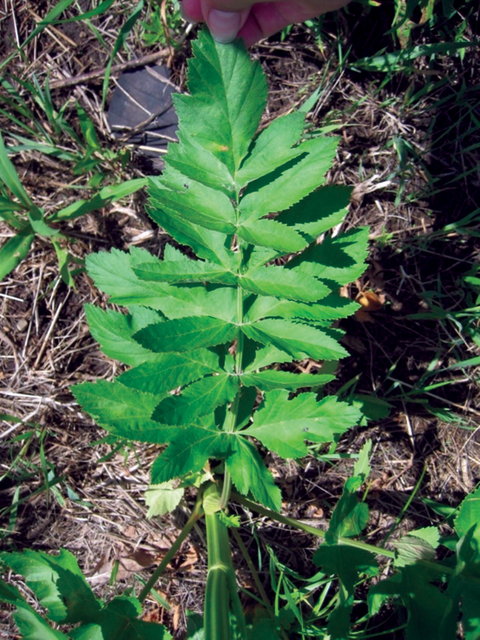Quick facts
-
Wild parsnip, Patinaca sativa, can grow 2 to 5 feet tall and has yellow umbrella-shaped flowers.
-
It’s found in fields, roadsides and some wet pastures.
-
It causes severe sunburn and blistering of the skin after contact or ingestion and exposure to UV light.
-
Re-applying herbicide, mowing and hand pulling can help control wild parsnip.
-
Always follow the herbicide label for instructions and grazing restrictions.
-
Wear protective clothing when handling wild parsnip.
-
Identifying
-
Hairy, grooved and 2- to 5-foot tall stem
-
Coarse, saw-toothed edged leaves
-
Yellow umbrella-shaped flowers
-
Looks similar to the ornamental Queen Anne’s Lace
-
Biennial, completes its life cycle over two years
-
Reproduces by seed
Where is it found?
Wild parsnip grows throughout the United States and is found in fields, roadsides and sometimes wet pastures.
Toxicity
Wild parsnip may have chemicals called furanocoumarins. These chemicals can cause severe sunburn (photosensitivity) in people and animals that eat them and become exposed to UV light (sunlight). Sunburn occurs after ingestion when furanocoumarins are in the blood vessels just below the skin.
Severe sunburn occurs on the white or other light-skinned areas, but not dark skinned areas. This is because the pigment, melanin, in the dark skin absorbs the UV light and prevents it from reacting with the furanocoumarins. Thus, shade from sunlight reduces severe sunburn in livestock eating plants with furanocoumarins.
Wild parsnip is toxic through all plant growth stages, when eaten fresh or dried in hay. Seeds also have high amounts of furanocoumarins.
Treatment
Remove the plant source. Move animals to shaded areas. You can use topical treatments for skin wounds.
Control
A few herbicides exist that help control wild parsnip. But you may need to re-apply them for control. Herbicides and mowing works better on smaller plants before their stems become woody. Always follow herbicide directions and grazing restrictions stated on the herbicide label.
You may need to remove larger plants by hand. Always wear gloves and protective clothing when coming in contact with wild parsnip to avoid severe blistering.
Reviewed in 2021





